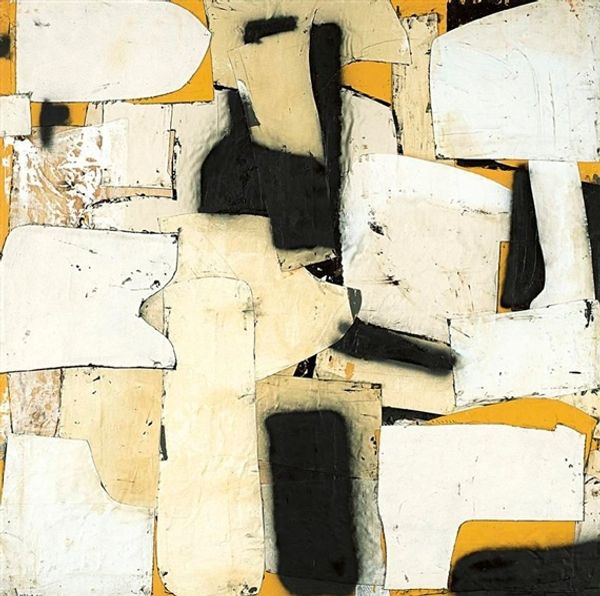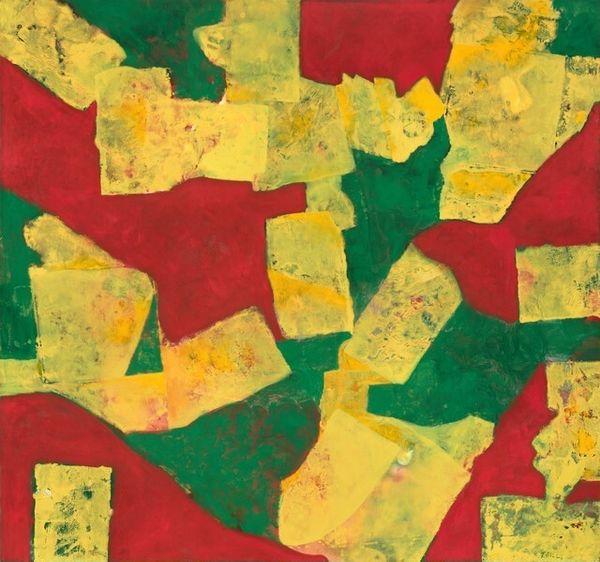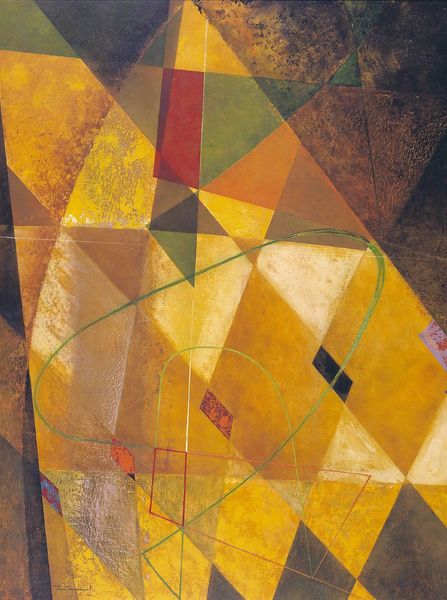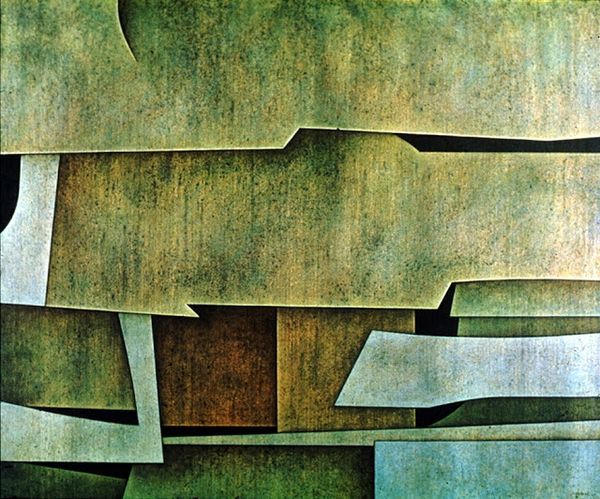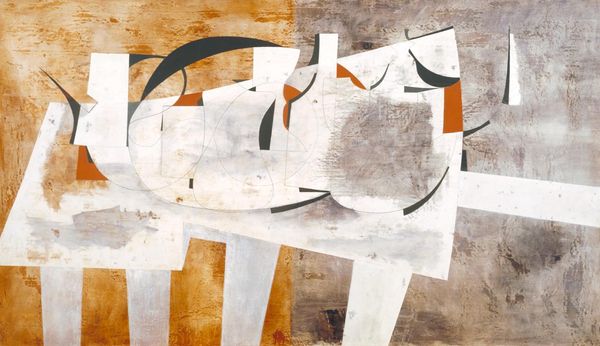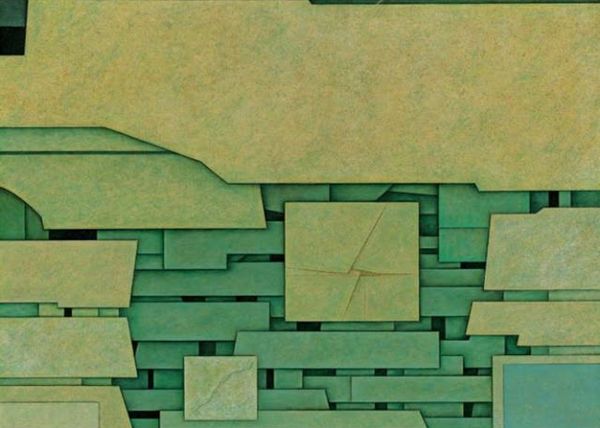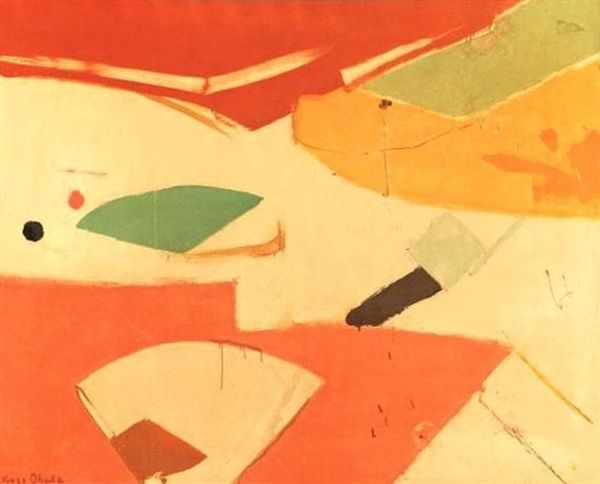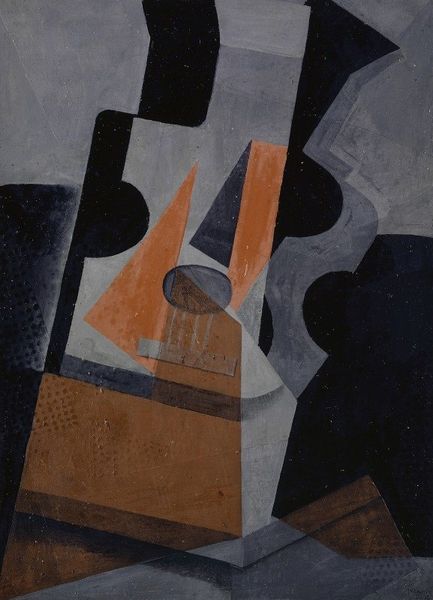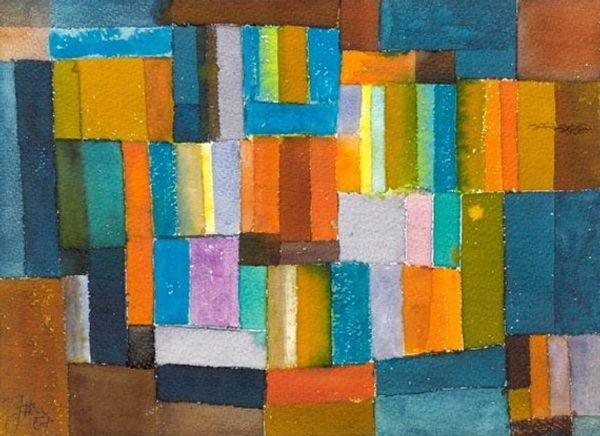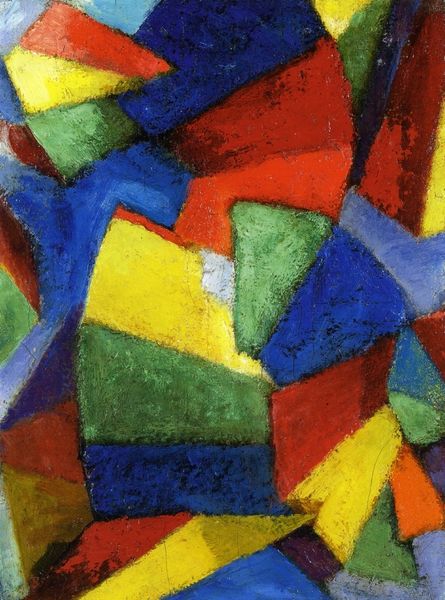
mixed-media, oil-paint
#
abstract-expressionism
#
abstract expressionism
#
mixed-media
#
abstract painting
#
oil-paint
#
form
#
oil painting
#
tile art
#
geometric
#
abstraction
#
line
Copyright: Gunther Gerzso,Fair Use
Curator: This is "Paredes Blancas," created in 1962 by Gunther Gerzso, primarily using mixed media and oil paint. Editor: My first impression is that this painting has a monumental stillness, almost like looking at architectural fragments suspended in time. The tension between the warm, deep red and the cooler, chalky white creates an immediate visual contrast. Curator: Gerzso's work often exists in a liminal space between abstraction and representation. While “Paredes Blancas” translates to "White Walls," the piece steers clear of straightforward depiction, prompting reflections on geometric abstraction within the context of post-war artistic exploration. Editor: Yes, those sharp, clean lines dissecting the composition feel loaded. I can't help but see those lines not just as divisions but as pathways—suggesting constraints and freedoms depending on the viewers interpretation. They also feel evocative of ancient ruins, don't you think? Layers of civilizations implied through fragmented shapes and colours. Curator: Precisely. His background in stage design might also lend itself to reading it that way. It is an interesting element when you consider the theatrical staging of socio-political concepts and their ability to impose or create illusions of limitations. Editor: Thinking about visual language and its cultural interpretation, the stark palette evokes contrasting concepts; the concept of purity in the whites against the fiery intensity and passion often associated with reds. Curator: And this dialogue between contrasting elements really mirrors the tensions present during that period. There's a quiet, contemplative mood despite the stark contrasts, maybe an effect Gerzso intended, considering Mexico’s modern development amidst global shifts. Editor: Definitely a quiet meditation, but also visually quite commanding, holding many potential interpretations in the negative spaces created. Curator: It’s a powerful piece, emblematic of how modern abstraction was navigating identity, memory and the complex narratives of place. Editor: It definitely left me contemplating visual weight, both structurally and symbolically. A testament to how even ostensibly "simple" forms can provoke really layered thought.
Comments
No comments
Be the first to comment and join the conversation on the ultimate creative platform.

